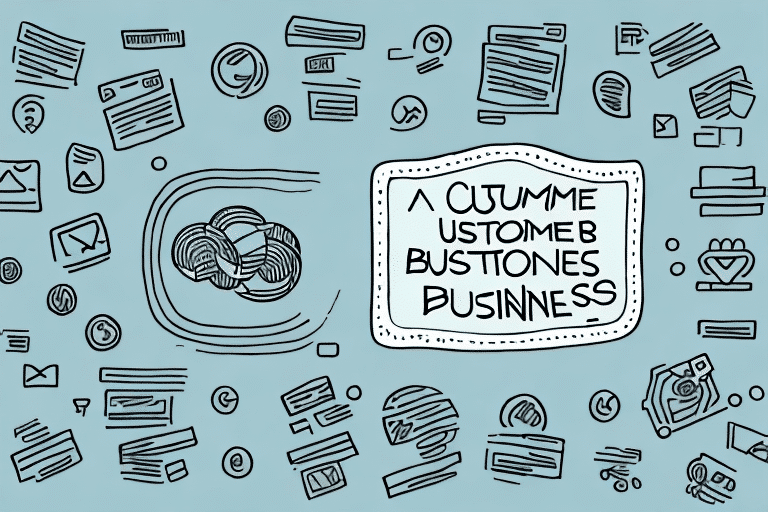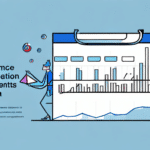Understanding Customer Retention
Customer retention refers to the ability of a business to keep its existing customers over a prolonged period. It is a critical metric that measures the rate at which a business retains its customers over a given timeframe. Valuing customer retention signifies the importance of building a strong and loyal customer base, which is essential for sustained growth and success. This comprehensive guide delves into the meaning of customer retention, its significance, and effective strategies to enhance it.
The Importance of Customer Retention
Cost-Effectiveness
Retaining existing customers is significantly less expensive than acquiring new ones. According to a study by Harvard Business Review, acquiring a new customer can cost up to five times more than retaining an existing one. This cost efficiency makes customer retention a financially strategic focus for businesses.
Increased Revenue and Profits
Loyal customers tend to spend more over time, leading to increased revenue and higher profit margins. Repeat purchases and upselling opportunities contribute to a steady income stream, enhancing the overall financial health of the business.
Brand Advocacy and Reputation
Satisfied customers are more likely to become brand advocates, sharing their positive experiences through word-of-mouth referrals and online reviews. This organic promotion enhances brand reputation and attracts new customers without significant marketing expenditures.
Benefits of Customer Retention
Enhanced Customer Satisfaction
Focusing on retention ensures that customer satisfaction remains a priority. Satisfied customers are more likely to remain loyal and contribute positively to the business's reputation.
Positive Word-of-Mouth Marketing
Happy customers often recommend businesses to their friends and family, acting as free promoters. This form of marketing is highly effective and credible, leading to increased brand awareness and customer acquisition.
Resilience During Economic Downturns
Businesses with high retention rates are better positioned to withstand economic challenges. Loyal customers are more likely to continue their patronage even during tough economic times, providing a stable revenue base.
Calculating Retention Metrics
Customer Retention Rate (CRR)
The Customer Retention Rate is a key metric that measures the percentage of customers a business retains over a specific period.
Formula:
CRR = ((CE - CN) / CS) × 100
- CE: Number of customers at the end of the period
- CN: Number of new customers acquired during the period
- CS: Number of customers at the start of the period
A high CRR indicates effective customer satisfaction and loyalty strategies. Improving CRR can be achieved through loyalty programs, exceptional customer service, and regular engagement with customers.
Customer Lifetime Value (CLV)
Customer Lifetime Value estimates the total revenue a business can expect from a single customer account over the entire duration of their relationship.
Formula:
CLV = (Average Purchase Value × Purchase Frequency) / Churn Rate
- Average Purchase Value (APV): The average amount spent per purchase
- Purchase Frequency (PF): The average number of purchases a customer makes
- Churn Rate (CR): The rate at which customers stop doing business with the entity
Understanding CLV helps businesses segment their customers and tailor marketing efforts to maximize profitability.
Factors Influencing Customer Retention
Customer Satisfaction
Satisfaction is paramount in retaining customers. Ensuring that products or services meet or exceed customer expectations fosters loyalty.
Value Proposition
A compelling value proposition differentiates a business from its competitors, providing customers with reasons to stay committed.
Customer Support and Service
Responsive and effective customer support enhances the overall customer experience, increasing the likelihood of retention.
Competition
High levels of competition necessitate continuous improvement and innovation to retain customers who have multiple choices.
Effective Strategies to Improve Customer Retention
Exceptional Customer Service
Providing prompt, courteous, and effective customer service addresses issues swiftly, fostering trust and loyalty.
Personalized Experiences
Using customer data to tailor experiences, recommendations, and communications makes customers feel valued and understood.
Loyalty Programs
Implementing rewards programs incentivizes repeat business and reinforces customer loyalty through tangible benefits.
Regular Communication
Maintaining consistent communication through newsletters, updates, and personalized messages keeps the business top-of-mind.
Feedback and Continuous Improvement
Actively seeking and acting on customer feedback demonstrates a commitment to meeting customer needs and enhances satisfaction.
Referral Incentives
Encouraging existing customers to refer new ones through incentives like discounts or free products can expand the customer base while rewarding loyalty.
Building a Successful Customer Retention Program
Understanding Customer Behavior
Analyzing customer data to understand behaviors, preferences, and needs enables the creation of targeted retention strategies.
Implementing Feedback Systems
Establishing effective feedback mechanisms, such as surveys and focus groups, allows businesses to gather actionable insights.
Offering Incentives and Rewards
Providing exclusive offers, discounts, or access to special events for loyal customers fosters a sense of belonging and appreciation.
Continuous Improvement
Regularly reviewing and refining retention strategies based on performance metrics and customer feedback ensures ongoing effectiveness.
Measuring the Success of Retention Efforts
Key Metrics to Track
- Retention Rate: Measures the percentage of retained customers over a period.
- Customer Lifetime Value: Estimates the total revenue from a customer over their lifetime.
- Churn Rate: Indicates the percentage of customers lost during a period.
- Customer Satisfaction Score (CSAT): Gauges customer satisfaction levels.
- Net Promoter Score (NPS): Measures the likelihood of customers recommending the business.
Tracking these metrics provides insights into the effectiveness of retention strategies and highlights areas needing improvement.
Analyzing Customer Feedback
Regularly collecting and analyzing customer feedback helps identify strengths and weaknesses in the customer experience, guiding strategic adjustments.
Avoiding Common Customer Retention Mistakes
Neglecting Customer Feedback
Failing to listen to customer feedback can result in unmet needs and decreased satisfaction, leading to higher churn rates.
Lack of Personalization
Generic interactions fail to engage customers on a personal level, reducing emotional connections and loyalty.
Inconsistent Customer Service
Providing inconsistent service undermines trust and reliability, prompting customers to seek alternatives.
Ignoring Competitive Landscape
Not monitoring competitors can result in missed opportunities for differentiation and innovation, making it easier for customers to switch providers.
Case Studies: Successful Customer Retention Techniques
Amazon
Amazon has excelled in customer retention by offering personalized recommendations, a seamless shopping experience, and exceptional customer service. Their Prime membership program further incentivizes loyalty by providing exclusive benefits.
Starbucks
Starbucks' loyalty program rewards repeat customers with points that can be redeemed for free products. Their focus on creating a personalized experience through mobile app integration and tailored promotions has significantly enhanced customer loyalty.
The Role of Technology in Customer Retention
Customer Relationship Management (CRM) Systems
CRM systems enable businesses to track customer interactions, preferences, and purchase history, facilitating personalized engagements and targeted retention strategies.
Data Analytics
Leveraging data analytics allows businesses to gain insights into customer behavior, predict churn, and identify opportunities for engagement and improvement.
Automation Tools
Automated marketing and communication tools ensure timely and relevant interactions with customers, enhancing engagement without requiring extensive manual effort.
Using Social Media for Effective Customer Retention
Engagement and Interaction
Social media platforms provide avenues for businesses to engage directly with customers, addressing queries, and fostering a community around the brand.
Content Personalization
Creating personalized and relevant content on social media helps in maintaining customer interest and loyalty.
Monitoring and Responding to Feedback
Active monitoring of social media channels allows businesses to promptly respond to customer feedback and resolve issues, enhancing satisfaction and retention.
The Importance of Personalization in Customer Relationships
Targeted Marketing
Personalized marketing campaigns resonate more with customers, increasing engagement and the likelihood of repeat business.
Customized Product Offerings
Offering products or services tailored to individual customer preferences can significantly enhance satisfaction and loyalty.
Personalized Communication
Using customer data to personalize communication, such as addressing customers by name and referencing past interactions, fosters a deeper connection.
Conclusion: Prioritizing Customer Retention for Long-Term Success
Customer retention is a fundamental metric for achieving long-term business success. By focusing on customer satisfaction and loyalty, businesses can benefit from repeat business, positive referrals, increased revenue, and higher return on investment. Effective customer retention strategies involve understanding customer behaviors, needs, and preferences, and delivering personalized experiences that exceed expectations. Investing in customer retention not only strengthens the customer base but also builds a resilient foundation for sustained growth and competitiveness in the market.




















